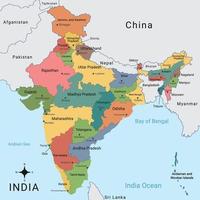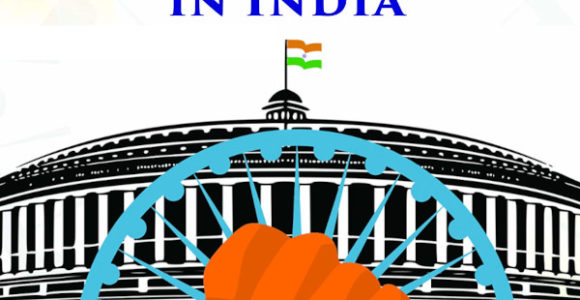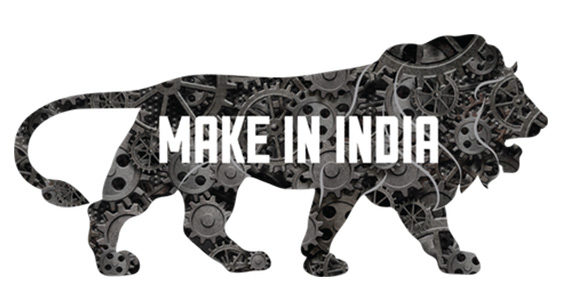
Pain of Living & Migration from India
The Pain of Living in India: A Complex Reality
India is often celebrated as a land of vibrant cultures, rich histories, and breathtaking landscapes. From the towering Himalayas to the serene beaches of the South, the country offers a unique blend of diversity and beauty. Yet, beneath this allure lies a harsh reality that many of its citizens face daily. The “pain of living in India” is a multifaceted experience, shaped by a myriad of social, economic, and political factors that affect the lives of millions. This pain is not always visible on the surface, but it permeates through the lives of the people in different ways, from the challenges of poverty to the everyday struggles of navigating a complex, often oppressive system.
1. Poverty and Inequality
India has one of the fastest-growing economies in the world, but this growth has not been equitable. According to the World Bank, approximately 22% of the population (around 300 million people) still lives below the poverty line, despite impressive strides in economic development. Economic disparities persist, with India ranking 139th out of 189 countries in the Human Development Index (UNDP, 2020). The wealth gap is widening — the richest 1% of the population own over 58% of India’s total wealth, according to the Oxfam India report (2020).
Urbanization has created cities where extreme wealth and poverty coexist. In Mumbai, India’s financial capital, the number of people living in slums is staggering: around 60% of the city’s population resides in informal settlements. This disparity is emblematic of how India’s rapid economic growth has not translated into equal benefits for all.
2. Overpopulation and Infrastructure Strain
India’s population, now over 1.4 billion, is one of the largest in the world. The country has witnessed a population explosion over the past few decades. In 1951, India’s population was about 361 million, but by 2021, it had crossed the 1.4 billion mark. This sheer scale creates immense pressure on public services and infrastructure.
For instance, Delhi, India’s capital, regularly experiences some of the worst air pollution levels globally. According to IQAir, in 2022, Delhi ranked as the most polluted capital city in the world, with an annual average of 84.1 µg/m³ of particulate matter (PM 2.5), far exceeding the World Health Organization’s safe limit of 5 µg/m³. Overcrowding in cities also results in traffic congestion; Mumbai residents, on average, spend 58% of their time in traffic (TomTom Traffic Index, 2020).
3. Migration and Urbanization
Migration, both internal and international, plays a significant role in shaping the socio-economic landscape of India. Every year, millions of Indians migrate from rural areas to cities in search of better employment opportunities, healthcare, and education. According to the Census of India 2011, about 377 million people, or 31% of the population, were internal migrants, and this number has likely increased in the subsequent years.
While cities like Mumbai, Delhi, and Bangalore offer job opportunities in industries like IT, manufacturing, and finance, the influx of migrants has put immense pressure on urban infrastructure. This has led to the expansion of informal settlements and slums, with people living in overcrowded and substandard conditions. In Delhi, for example, 60% of the population lives in slums, many of which are populated by migrants from other states.
The COVID-19 pandemic highlighted the plight of migrant workers when the government imposed a nationwide lockdown in March 2020. Millions of workers, many of whom were employed in low-wage, informal sectors like construction and hospitality, were left stranded without food, money, or transportation. Reports estimate that over 10 million migrant workers returned to their rural homes during this time, many facing extreme hardship during their journeys.
On the other hand, international migration also remains significant. A large number of Indians migrate abroad for better employment prospects, particularly to countries like the United States, Canada, and the Middle East. According to the United Nations, in 2020, there were 18 million Indian migrants living abroad, constituting the largest diaspora in the world.
Migration to the Middle East
One of the largest migration patterns from India is towards the Middle East, where millions of Indians, especially from poorer states like Kerala, Tamil Nadu, and Uttar Pradesh, seek employment opportunities. The Gulf Cooperation Council (GCC) countries — including Saudi Arabia, the United Arab Emirates (UAE), Qatar, and Kuwait — are major destinations for migrant workers. The Ministry of External Affairs of India reports that over 8 million Indians work in the Middle East, primarily in construction, hospitality, and other low-wage jobs. While these workers often send remittances back to their families, their working conditions are often harsh, and many face exploitation, lack of labor rights, and limited access to healthcare.

For instance, workers involved in construction projects like the Qatar World Cup 2022 or those in the UAE’s rapidly growing cities endure grueling work hours in high-risk environments, with reports of unsafe conditions leading to fatalities. In 2019, the International Labour Organization (ILO) estimated that around 2,000 Indian migrant workers died in the GCC countries each year due to accidents and unsafe working conditions.
Migration to the West
Beyond the Middle East, many Indians migrate to Western countries, particularly the United States, Canada, the United Kingdom, and Australia, in search of higher education, professional opportunities, and a better quality of life. The US Census Bureau estimates that there are approximately 4.5 million Indians living in the United States, making up one of the fastest-growing immigrant groups. In Canada, Indians form the largest visible minority, with over 1.5 million Indian-origin people.
While migration to Western countries offers better working conditions and higher wages, it is not without its challenges. Indians abroad often face cultural isolation, racial discrimination, and sometimes even exploitative labor conditions. However, the success stories of Indian migrants, particularly in the tech industry, are widely celebrated. In the Silicon Valley, for instance, Indians make up a significant portion of the workforce, with many occupying high-ranking positions in leading tech firms like Google, Microsoft, and Adobe.
Migration to Western countries also brings about significant financial benefits, as remittances sent back to India help improve the standard of living for many families. According to the World Bank, India received around $87 billion in remittances in 2020, the highest of any country in the world.
4. Corruption and Bureaucracy
Corruption is endemic in India, affecting various sectors of life. Transparency International’s Corruption Perception Index (CPI) for 2020 ranked India 86th out of 180 countries. This ranking highlights the significant role that bribery and inefficiency play in everyday life. Government services like issuing licenses, obtaining ration cards, and even medical services are often plagued by long delays and the need to pay bribes.
The case of India’s demonetization in 2016 is an example of how mismanagement and a lack of transparency can create widespread distress. The sudden withdrawal of ₹500 and ₹1000 notes led to long queues at banks, massive disruptions to the informal economy, and a loss of jobs, with a 2018 report by the Reserve Bank of India estimating that the country’s economy had shrunk by 1.5% due to the policy.
5. Gender and Caste-Based Discrimination
India’s deeply ingrained social hierarchies often result in immense pain for marginalized groups. Women continue to face systemic gender-based violence, limited economic opportunities, and restricted access to education. According to the National Crime Records Bureau (NCRB), there were 3.6 lakh cases of crimes against women in 2020, including rape, dowry deaths, and domestic violence.
The caste system, though officially abolished, remains entrenched in many parts of Indian society. According to Human Rights Watch, the Scheduled Castes (SCs) and Scheduled Tribes (STs) — historically referred to as “Untouchables” — continue to face discrimination, social exclusion, and violence. In 2020, the NCRB reported over 45,000 cases of atrocities against Dalits and Adivasis. Instances of caste-based violence, such as the 2016 Una flogging incident in Gujarat, continue to fuel social unrest.
6. Religious and Political Polarization
In recent years, India has experienced an increase in religious and political polarization. The rise of Hindu nationalist politics, especially under the leadership of Prime Minister Narendra Modi and the Bharatiya Janata Party (BJP), has led to deepened divisions between religious communities. Communal riots, such as those in Delhi in 2020, where over 50 people were killed during clashes between Hindus and Muslims, underscore the growing tensions.
The CAA-NRC protests in 2019 and 2020 further revealed the divisiveness of current political policies, as many Muslims felt marginalized by the Citizenship Amendment Act (CAA) and the National Register of Citizens (NRC). These movements highlighted the increasing difficulty in maintaining communal harmony in a diverse country like India.
7. Mental Health Struggles
Mental health has long been an overlooked issue in India. According to the World Health Organization (WHO), 15% of India’s population suffers from mental health disorders, yet less than 1% of the government’s health budget is allocated to mental health. The National Mental Health Survey (2016) reported that 13.7% of India’s population experiences mental health disorders, yet many people are unable to access treatment due to stigma or lack of resources.
A notable event that highlighted the mental health crisis in India was the suicide of actor Sushant Singh Rajput in June 2020, which brought the issue of mental health to national attention. His death led to widespread debates about the pressures faced by individuals in the entertainment industry, as well as the need for improved mental health resources across the country.
8. Environmental Challenges
India faces immense environmental challenges. According to the Climate Action Tracker, India is on a path to a 3°C rise in global temperatures by the end of the century, a far higher rate than what the Paris Agreement aims to limit. Pollution, water scarcity, and deforestation are growing concerns.
Air pollution alone is responsible for over 1.2 million premature deaths each year, according to the Health Effects Institute (2020). Farmers in states like Punjab and Haryana also face severe challenges due to erratic weather patterns, crop failure, and the growing problem of stubble burning, which worsens air pollution.
9. The Struggle for Education and Employment
The education sector in India faces significant disparities. In rural areas, government schools often suffer from a lack of basic facilities, overcrowded classrooms, and untrained teachers. According to a 2020 report by the Annual Status of Education Report (ASER), only 47.8% of children in rural India are able to read a simple paragraph of text, highlighting the severe gaps in educational outcomes.
In the job market, unemployment rates in India are at a 45-year high. According to the Centre for Monitoring Indian Economy (CMIE), India’s unemployment rate stood at 7.9% in 2021. Young people, especially graduates, face difficulties in securing employment that matches their qualifications, further exacerbating frustration.
Conclusion
The pain of living in India is not a singular experience but a complex tapestry of struggles and hardships that vary across regions, classes, genders, and religions. Migration, both internal and international, continues to shape the socio-economic and political landscape of the country. While India continues to grow and evolve, these issues remain deeply embedded in the fabric of society. Recognizing and addressing the challenges that many Indians face is essential to building a more equitable, inclusive, and prosperous future for all. The path to overcoming these pains will require systemic change, a commitment to social justice, and a collective effort from every sector of society.
Key Terms:
- air pollution ,
- caste discrimination ,
- corruption ,
- india ,
- Indian diaspora ,
- inequality ,
- mental health ,
- Middle East migration ,
- migration ,
- poverty ,
- unemployment ,
- urbanization
Disclaimer: The information provided here has been compiled from various sources to the best of our knowledge. While every effort has been made to ensure the accuracy of the details, there may be occasional errors or omissions. If you find any discrepancies or incorrect information, kindly inform us so we can make the necessary corrections. Thank you for your understanding and cooperation.







